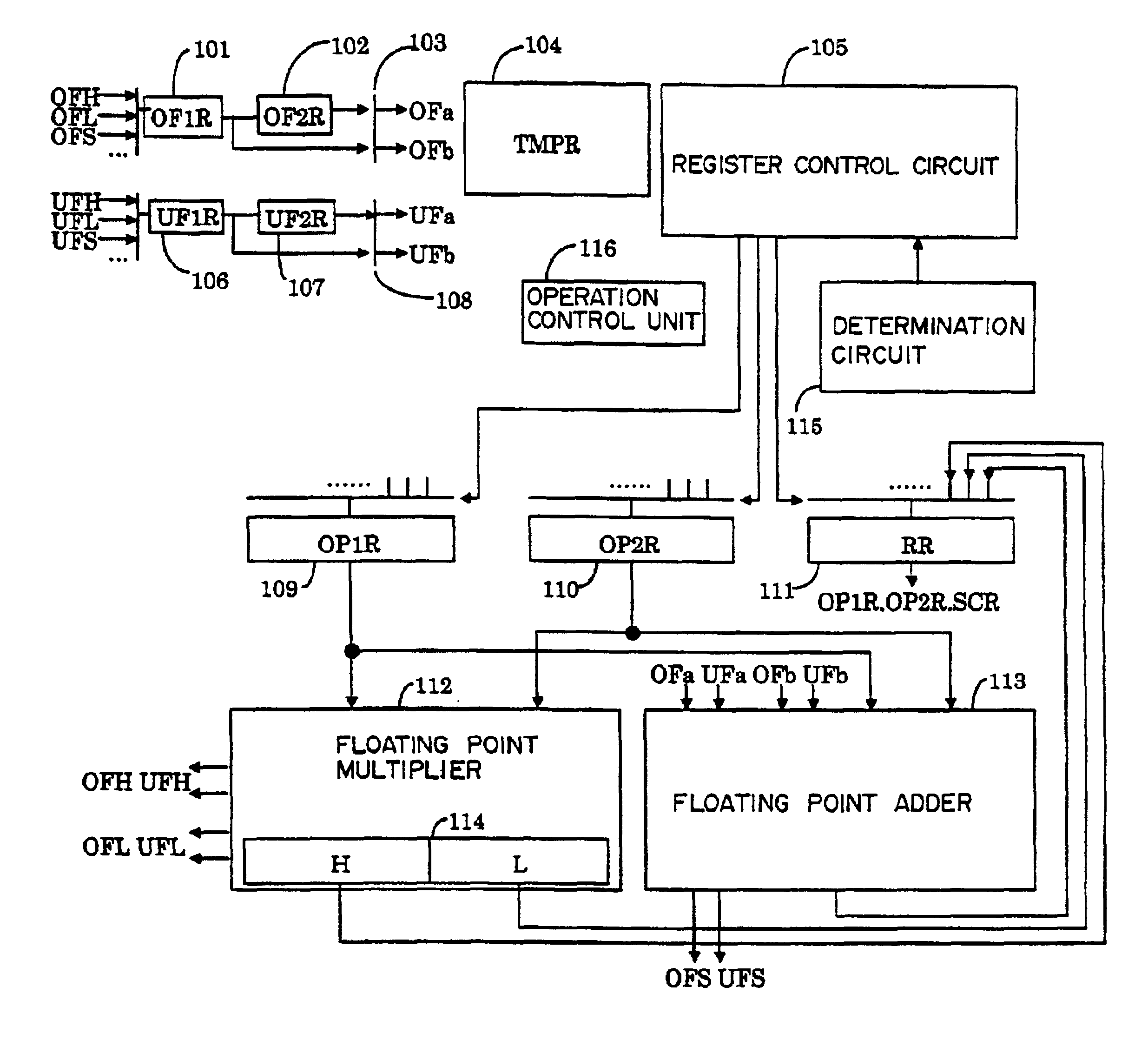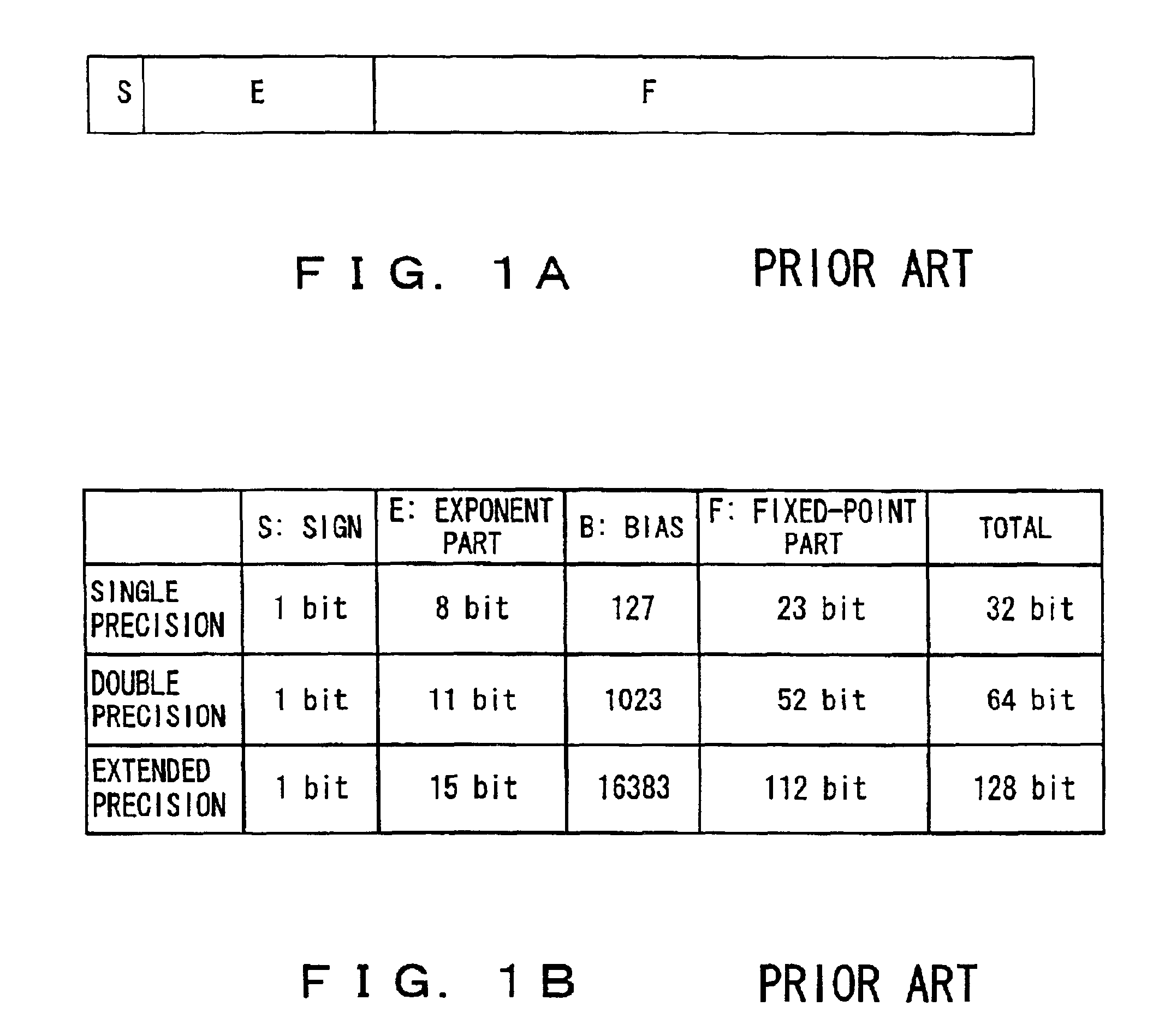Apparatus and method of performing product-sum operation
a product-sum operation and product-sum technology, applied in the field of use in an arithmetic unit, can solve the problems of long latency and inappropriate arithmetic operations, and achieve the effect of satisfactory precision and reducing the circuit siz
- Summary
- Abstract
- Description
- Claims
- Application Information
AI Technical Summary
Benefits of technology
Problems solved by technology
Method used
Image
Examples
Embodiment Construction
[0070]The embodiments of the present invention are described below by referring to the attached drawings.
[0071]First described below is the principle of an embodiment of the present invention. In the following explanation, the arithmetic unit according to the IEEE Standard for performing a product-sum operation A×B+C on the three floating point numbers A, B, and C whose exponent parts are assigned N bits, and whose fixed-point parts are assigned M bits are realized by improving the existing IEEE floating point number arithmetic unit.
[0072]First, the multiplication unit for performing a multiplication on operands A and B input into the unit.
[0073]Although the fixed-point part of the value input into the multiplication unit is M bits, one implicit bit to be followed by the most significant bit of the fixed-point part is omitted in the representation form of the IEEE floating point number. Therefore, (M+1) bits with the implicit bit included is actually processed as a target of a fixed...
PUM
 Login to View More
Login to View More Abstract
Description
Claims
Application Information
 Login to View More
Login to View More - R&D
- Intellectual Property
- Life Sciences
- Materials
- Tech Scout
- Unparalleled Data Quality
- Higher Quality Content
- 60% Fewer Hallucinations
Browse by: Latest US Patents, China's latest patents, Technical Efficacy Thesaurus, Application Domain, Technology Topic, Popular Technical Reports.
© 2025 PatSnap. All rights reserved.Legal|Privacy policy|Modern Slavery Act Transparency Statement|Sitemap|About US| Contact US: help@patsnap.com



